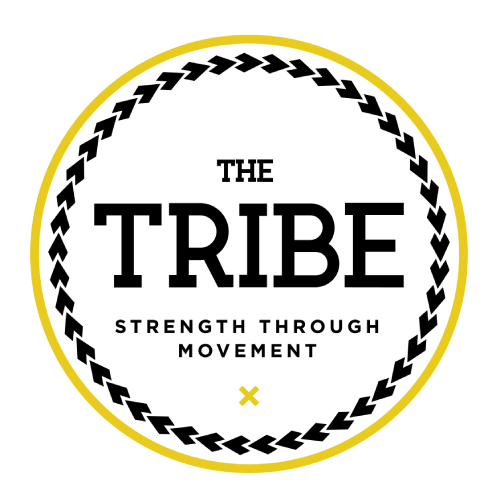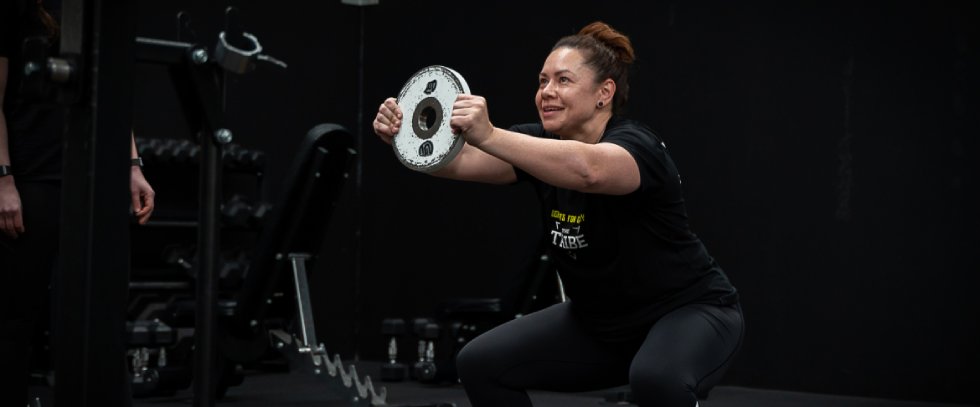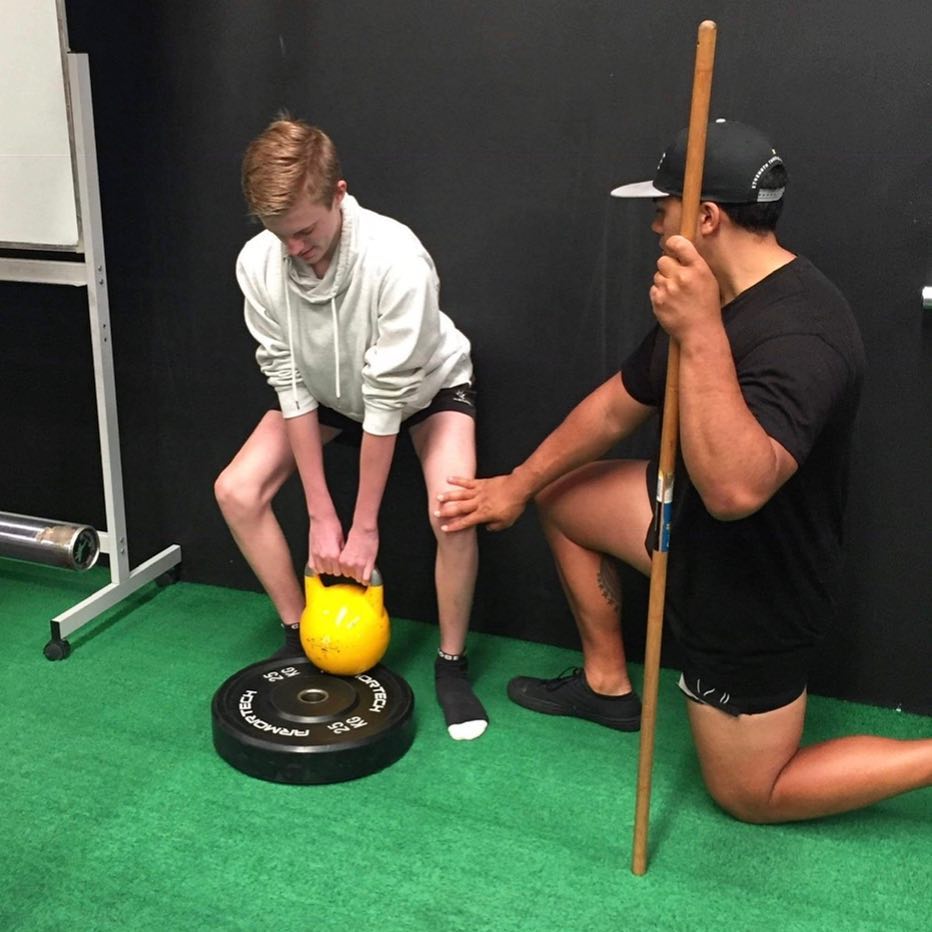Have you ever thought about how many of your muscles need to work together for you to push a cart full of groceries, pick something heavy off the floor, or bend over to tie your shoe? Without realizing it, our everyday tasks call on multiple muscles to work simultaneously.
While traditional strength building can help you bulk up, functional strength training is gaining popularity for its ability to prevent injury and help improve mobility, flexibility, endurance, and stamina.
Here, we’ll explain what functional strength training is, the benefits of functional strength training, and address the difference between functional strength training and traditional strength training.
What Is Functional Strength Training?
Functional strength training refers to workouts that consist of compound exercises that call on more than one muscle group to work in unison. Functional training movements challenge multiple muscles at once and rely on multiple planes of movement.
Examples of functional training exercises include compound movements such as:
- Lunges
- Pushup
- Burpees
- Deadlifts
- Squats
Functional training also uses many movements that mimic typical daily activities. All of the hinging, rotation, squatting, pulling, and side-to-side motions translate into being able to pick up something heavy or climb several flights of stairs comfortably and easily.
Functional strength training favours free weights and the use of body weight over machines. Machines often isolate one muscle at a time whereas relying on your bodyweight mimics real-life motions. Along with using body weight, typically equipment in functional training includes kettlebells, sandbags, resistance bands, and dumbbells.
5 Benefits of Functional Strength Training
1. Functional Training Improves the Body’s Ability to Function as a Unit
Functional training focuses heavily on exercises that require various movement patterns rather than isolated movements. Training multiple muscle groups and moving your body in different planes helps the body function more efficiently as a unit. Think of it as training the entire system rather than focusing on a single part at a time.
Through functional strength training, both your muscles and mind will be challenged and you will likely notice an increased mind-body connection. By improving how your body and mind interact, you can improve your ability to move safely and comfortably.
Strengthening the body’s ability to function in unison translates into real-world actions such as vacuuming, yard work, gardening, changing a tire, or cleaning. Relying on your body as the force rather than the limited range of motion of a machine helps you tune in to internal forces to complete external tasks. This increased responsiveness can help you improve how you function in your daily activities, athletic training, races, or sports.
2. Functional Training Improves Body Awareness, Balance, and Coordination
Recruiting multiple muscle groups to move your body requires a higher level of concentration, coordination, and core strength than machines that isolate one muscle group.
By training several muscle groups at once, individuals that practice functional training often report significant increases in body awareness, coordination, mobility, and balance. The more you practice functional strength training, the more self-awareness you can create.
Whether you are looking to amp up your results in the gym, train for a marathon, or simply go about your daily tasks without worrying about tweaking your back or pulling a muscle, functional strength training can help you feel strong and capable of whatever you need to accomplish.
3. Functional Strength Training Improves Flexibility and Mobility
Are your hamstrings constantly tight? Do your hips feel locked up? The movements in functional strength training call on the muscles to operate with mobility and flexibility. Expect your chest, back, hips, and upper body to be stretched and flexed while releasing tension through a series of contracting and loosening movements.
These improvements in mobility and flexibility can translate into improved explosiveness, increased power, and improved flexibility in crucial areas such as your hamstrings or hips.
Functional training can also reduce back pain by strengthening the muscles around the spine and improving mobility — an excellent advantage if you struggle with a weak back or tight back muscles. Along with improved athletic performance and a possible reduction in pain, the additional flexibility and mobility can reduce your chance of injury in both training and everyday life.
4. Functional Training Helps You Go About Your Daily Activities Safely and Comfortably
If you want an easy way to remember the purpose of functional training, it’s simple: Functional training helps you function.
By working in multi-directional movement patterns and requiring muscles to work together, you train your body to function more efficiently. This translates to an improvement in your ability to complete all the actions and tasks you need to do in a day.
The multi-directional movement patterns and simultaneous muscle activation in functional training are exceptional for improving your quality of life. Whether you struggle to climb a flight of stairs, worry every time you lift something heavy, or want to increase your stamina in sports, functional training can translate into an improvement in all areas of your life.
While traditional strength training can also help you complete your daily activities with more confidence and less discomfort, the dynamic exercises in functional training are better at mimicking everyday movement patterns.
5. Functional Training Can Help Prevent Injuries
Did you know functional training originally began as a form of movement designed to rehabilitate individuals after an injury and prevent new injuries? At its core, functional training focuses on improving an individual’s quality of life and preventing injury.
Whether you are recovering from an injury, prone to injuring certain areas (knees, ankles, etc.), or want to focus on injury prevention, functional training can be an effective and safe training tool.
Between training your body as a unit, improving your balance, increasing mobility, boosting coordination, and gaining a deeper connection with your body, functional training can reduce your chance of injury and help you become more comfortable going about daily tasks.
For some, daily tasks might consist of grocery shopping, working at a desk, and cleaning. For others, their days may be filled with intense physical training or athletic events. Regardless of your lifestyle, functional training can help you meet your daily tasks with less risk of injury.
What’s The Difference Between Functional Strength Training and Traditional Strength Training?
Many people wonder how functional strength training differs from traditional strength training. While they share many similarities and benefits, traditional strength training and functional strength training vary vastly in their objectives.
Traditional strength training involves precise movements that target a single muscle group at a time, such as bicep curls. The movements typically rely on a machine to be performed. The focus in traditional strength training is often bulking up.
Functional strength training emphasizes movements that mimic the real-life patterns our muscles go through in daily activities. Functional training focuses on improving the body’s ability to perform and function in everyday life. From hauling groceries to climbing stairs, functional training can help you go about your daily activities feeling comfortable, confident, and capable.
Functional strength training workouts include full-body, dynamic movements that call on multiple muscles to work in unison. Think jump squats or burpees instead of leg presses on a machine. By working multiple muscles at once, functional training improves core stability and endurance, allowing you to get stronger while also boosting your ability to perform.
Both functional strength training and traditional strength training can improve lean muscle, burn calories, support a healthy heart, and boost your mood. Depending on your goals, you may choose to focus on just traditional strength training or functional strength training, or a combination of both.
If your goal is bulking up and building serious muscle, traditional strength training is a popular route. If your goal is improving stability, mobility, stability, power, and endurance, then functional strength training is a great option to consider.
Want to Experience the Benefits of Functional Training?
If you want to learn more about functional strength training, we encourage you to contact our team of expert trainers. We offer customised functional strength training sessions that take your fitness level, goals, and lifestyle into account. We’ll develop a personalised training plan that will help you reach your goals safely and quickly.
Our mission at The Tribe is to offer a training experience that feels like “more than a gym”. When you become a member, you can count on us getting to know you by name and providing all the support you need. YOU are the reason we do what we do and we can’t wait to welcome you to our state-of-the-art facility full of dedicated individuals working toward their health and wellness goals.
Please feel free to reach out to us anytime with questions or for help deciding which class would be ideal for you.










